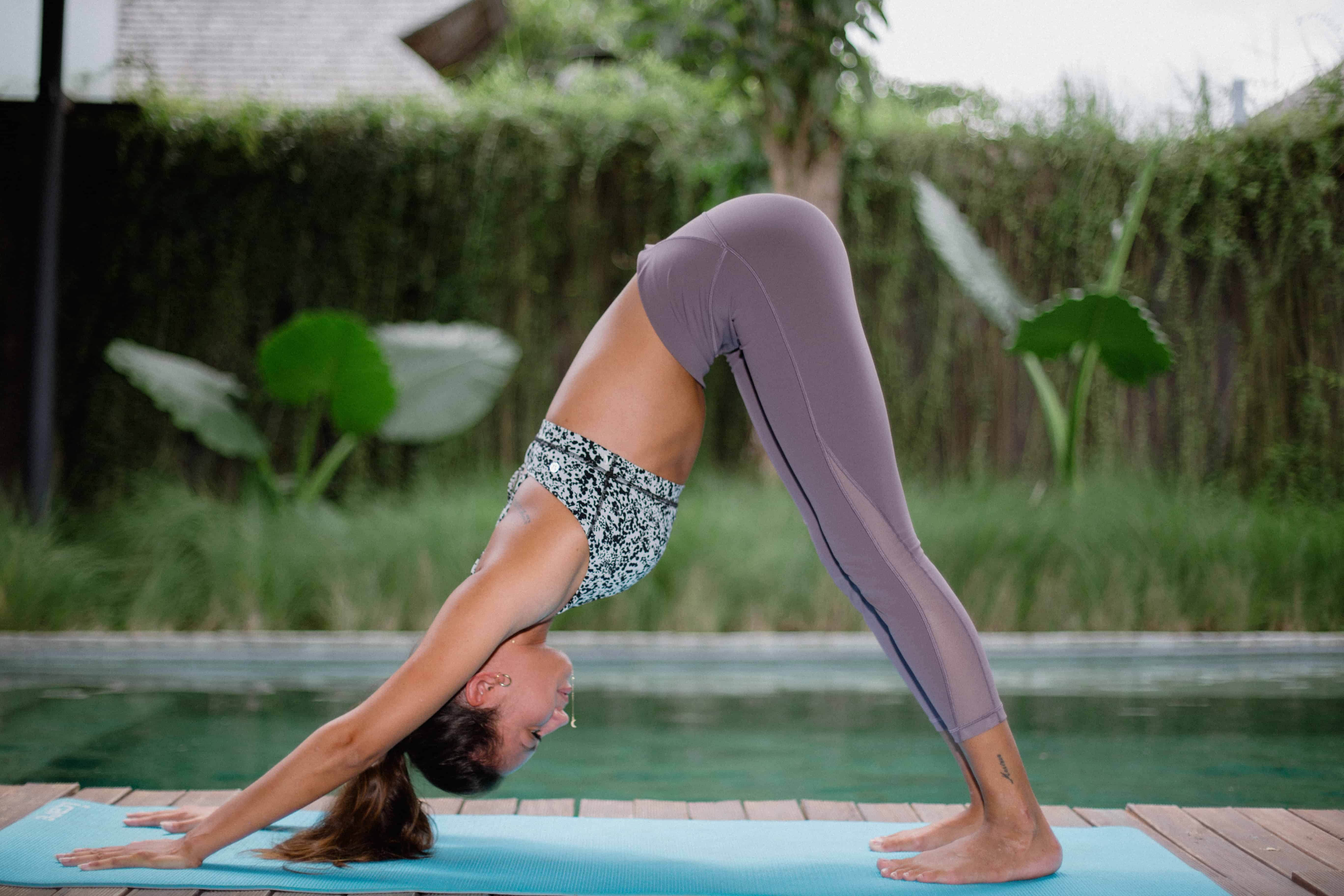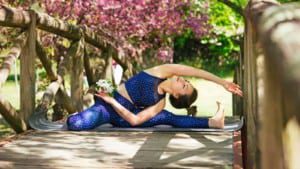For those who are unfamiliar with the practice, getting into yoga for beginners can seem like a daunting task. To a newcomer, there appears to be so much to the culture and the world that it can feel like there’s not really a go-to place to start.
To an extent, there is some truth to this; the world of yoga and the benefits that one can gain from it is a very expansive field that has a long history. However, this certainly does not mean that it is difficult to get involved with. There are plenty of ways to approach yoga for beginners that are intuitive and helpful in the long run.
The Benefits of Yoga
One of the most helpful ways to begin understanding and practicing yoga is to learn about the health benefits. It has been widely shown that yoga can help people develop their flexibility and posture in ways unparalleled by any other type of exercise.
Contrary to popular belief, there isn’t a specified size or level of fitness required to partake in yoga for beginners—all that you need is concentration and the interest to improve yourself. (1)
Another benefit of yoga for beginners is its ability to help you reduce your stress levels drastically. Beginner’s studios and even some general offices have begun to offer midday classes to help people relieve stress while on their lunch hour – something that can help you feel calmer and be more-than-ready to tackle the rest of your day.
It can also help you calm your thoughts and breathe better. This is because an essential part is being able to retain your concentration and calm yourself. This is typically achieved by regulating breathing, something that we often don’t pay much attention to. When you’re experiencing stress, you often don’t have consistent breathing patterns, which can intensify your stress. This makes yoga for beginners a way to promote mindfulness and be more self-aware.
Where Should I Begin?
You’d be surprised at how many yoga for beginners exercises are not only accessible, but completely possible to do in the comfort of your own home.
We’ve compiled a list of our 18 Best Yoga For Beginners Poses so you can know just where to start:
(You should have a mat for all of the following poses, as it makes it easier for your body to grip the ground and makes the exercises much more comfortable.)
1. Plank
One of the most recognizable poses you’ll become familiar with is the plank. To do this pose effectively, tuck your toes and put your hands in front of you. Hold your body up from your shoulders until your body is making a slanted position, similar to a plank of wood (where the position gets its name). Then breathe deeply for 1 minute, keeping track of every breath while holding the position intently. Release the pose, then do it again.
2. Bridge
This pose is similar to the plank in the way that your body makes a similar shape, like a plank of wood. However, with the bridge, you’re facing upward with your head being at the lowest height. So, you must prop your legs up and keep your arms underneath your back, extending your stomach outward to create the pose. Like with the plank, breathe deeply for 1 minute, release the pose, then do it again.
3. Downward Dog
This pose is likely the one people will poke fun at when it comes to yoga for beginners, but the parody is often unwarranted—the reason why this pose is so common is because it’s incredibly effective. To do this, curl your toes back (like the plank) and put your arms out in front of you, holding your body up. Then lift your behind in the air so your body makes a triangle shape, holding the pose for 3 minutes before relaxing.
4. Cow
Keeping in line with the animal theme, this pose has you holding your body up with your arms in front and knees touching the ground, like a cow that is grazing on grass. Make sure that your hands and knees are not too close together and focus on your breathing.
5. Child’s Pose
This pose is important because it allows the body to relax and prepare itself for doing more intense poses down the line. It is recommended that those looking to practice the child’s pose begin the position on all fours, slowly lowering the knees down. Lower your behind back into your heel and lay your arms out forward, bringing your head down with it.
6. Warrior I
Another well-known yoga pose for beginners is the Warrior, a pose that has you extend your right leg outward and your left leg back. Let your right knee extend so it is almost at a 90 degree angle while the left leg is at a slant. Make sure your right foot is facing the direction you are and your left foot is extending 45 degrees outward.
7. Warrior II
For the Alternate Warrior, you do the same exact leg and feet positions as the Warrior, but put your hands alongside each other and raise them upward above your head instead.
8. Seated Forward Bend
The Seated Forward Bend is a pose that will undoubtedly make your body more flexible the more you do it. Your upper abdomen is in the same position it is when you’re doing the Child’s pose, but this time, your legs are underneath you with your toes above your head. It’s similar to sitting down and bringing your head down to your knees, letting the rest of your body follow suit.
9. Cat Pose
Similar to the Cow Pose, the Cat Pose involves you being on all fours with your knees touching the ground. The difference, though, is that with the Cat Pose, you arch your back upward, creating a curve. This is a great move for yoga for beginners.
10. Cobra Pose
In the same manner that you extend your body outward for the Downward Dog, you bring your body down, keeping the entire body on the ground except for the abdomen. Keep your head looking upward, creating a curve like a cobra.
11. Corpse Pose
Another relaxation pose that is deceivingly difficult, the Corpse Pose has you lying down with your arms at your side like a corpse. The tricky part of this is getting your body to stay entirely still, as many find it difficult to keep such a calm position consistent.
12. Mountain Pose
This pose is another basic pose that any beginner can do—simply stand up straight and lift your shoulders slightly higher than usual. Put your hands together facing upward in a praying position and try to stand completely still, regulating your breathing.
13. Low Plank
Similar to the plank, for this pose, you start out in plank, but lower your body closer to the ground to strengthen the muscles that have to hold the pose.
14. Dancer’s Pose
For the Dancer’s Pose, stand up straight before bringing your left leg (knee bent) back with your left hand. Make sure you’re grabbing onto the arch of your foot and raise it until your left knee is the same height as your bottom. Then keep your body slanted and your right arm extended in front of you, looking upward.
15. Tree Pose
Similar to the Mountain Pose, the Tree Pose involves you holding your hands in front of you facing upward, but instead of standing straight, you lift one leg up and press it against the other at an angle. This exercise forces you to maintain strong balance.
16. Extended Side Angle
For this pose, stand up straight and then slide your legs further and further apart from each other until there is a triangle space between the two of them. Then, use your right arm to lower your body to the right (having your right arm touch your foot) while extending your left arm upward, all while maintaining this position.
17. Triangle Pose
The Triangle Pose often goes best with the Extended Side Angle because they’re very similar poses. The difference, though, is that you place an object on the ground near your right foot for your right hand to grab onto, as you want to make your body into a right angle.
18. Staff Pose
The staff pose is another deceivingly difficult pose that requires you to sit down with your back as straight as possible and your feet facing upward. The hard part of this is holding the pose and monitoring your breath to make sure there is an even flow throughout your body.
Other Tips For Beginners
We hope you enjoyed our list of 18 poses!
Three tips for beginners we want to share with you before you begin your journey are:
1. Understand Your Body’s Limits
Don’t try to hold yourself to impossible standards. Understand what you can or cannot do and try to listen to your body to see what it needs.
2. Find A Private Instructor, If Possible
Practicing alone is good, but it can be better to have an instructor guiding you to make sure that you’re doing things correctly.
3. BREATHE!
No matter how you do, make sure that you maintain steady, deep breaths! Once you connect with the flow of your breath, you will connect with the flow of your body and greatly increase your awareness and strength.
FINAL THOUGHTS ON YOGA FOR BEGINNERS
Taking your first foray into the yoga world doesn’t have to be difficult. There are plenty of poses on our list that you can start out with to begin your journey to a happier, healthier life.
Though it can be hard to get started, doing a few of these poses at least once a day will eventually get you to a point where your body is much more relaxed and flexible. On top of that, learning to control your breath will undoubtedly help you stay connected with your inner self and promote healthy concentration!
What do you think about our list of poses? Which ones have you done? Which ones are you going to try? Let us know!
https://www.youtube.com/watch?v=lFdcCXmGpy4


















